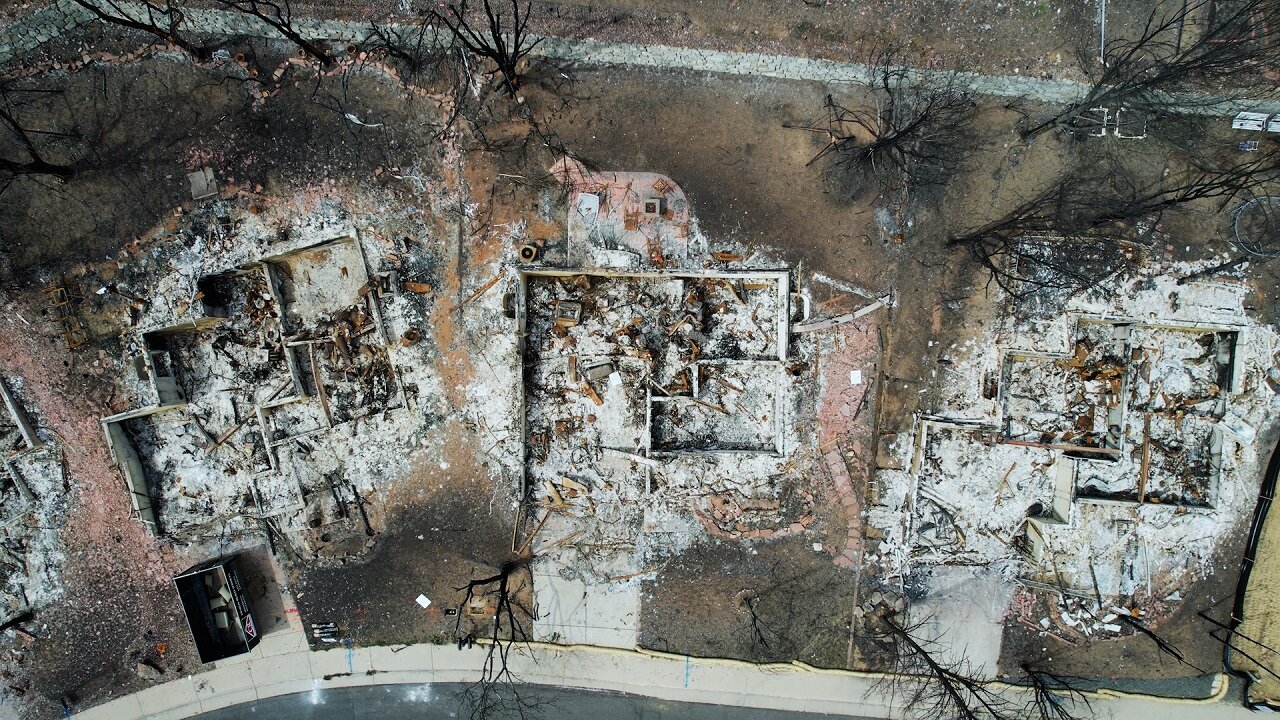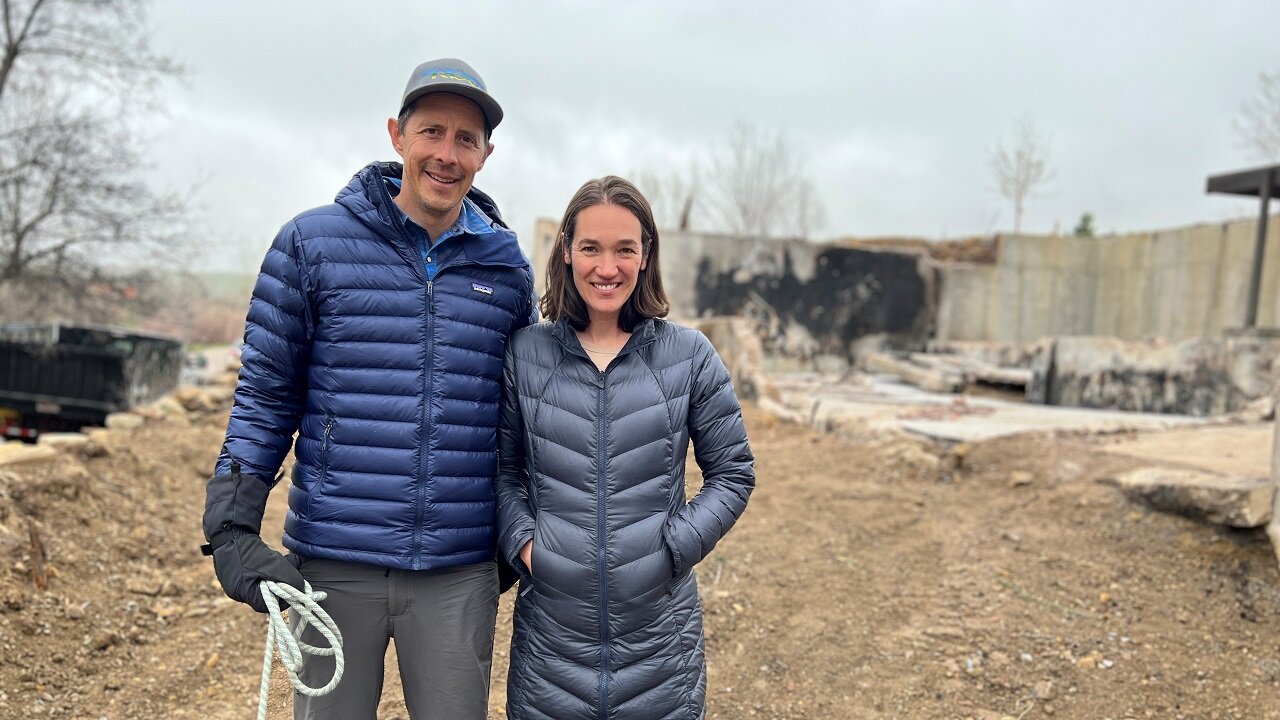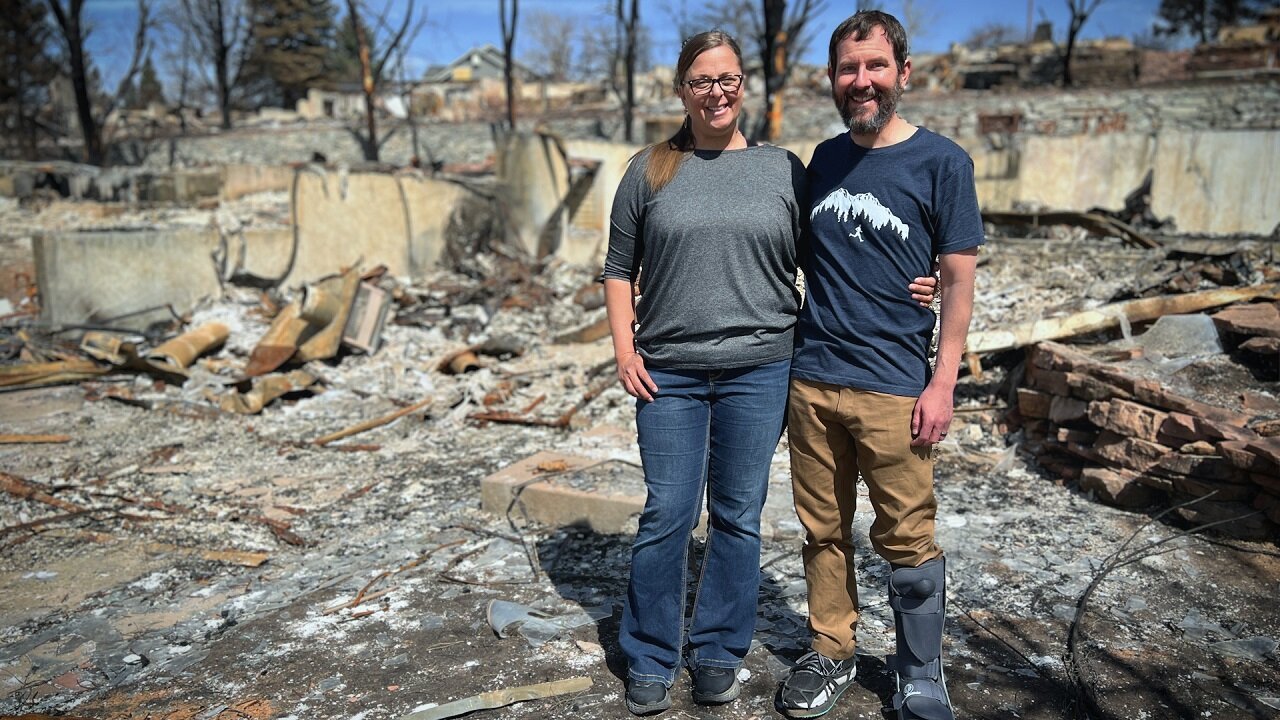'It's just a house, but not just a house.' Marshall Fire victims' plans to rebuild

Colorado Voices: Building Back Better after the Marshall Fire aired June 30, six months after the Marshall Fire burned more than 1,000 homes. Watch the episode here.
BOULDER COUNTY, Colo. — Brian Fuentes has no words to describe how he felt on Dec. 30, 2021.
Watching a plume of thick, gray smoke swallow up his neighborhood and an orange, flame-lit sky light the world around him, Fuentes struggled to explain the unspeakable tragedy to his two children, ages 7 and 4 years old.
Within a matter of minutes
Fuentes doesn’t remember exactly when the panic set in. He first heard the screeching roar of sirens, followed by a series of fire trucks zoom past his house when the fire started. Within a matter of minutes, the billow of smoke grew so overwhelming that Fuentes could hardly breathe, and his wife ran outside telling the two they needed to pack up and go, with no time to spare.
Hours later, Fuentes and his family found themselves at a friend’s house, watching the most destructive fire in Colorado history crumple the materialization of everything they worked for to the ground.
“Everything we’d done the last few years, everything we’d worked for, all of our time and money, it was just gone in a few hours,” Fuentes said.
Officials still have not released a cause for the Marshall Fire, but have ruled it the most destructive fire in the state and one of the most destructive in the country, with an estimated 1084 structures burned to the ground, and another 149 damaged. Boulder County reported six burn injuries and two presumed deaths.

A nightmare come true
Casey Lombardo has spent much of her son’s life reassuring him their house was safe from a forest fire, which was a fear of his. As the Lombardo home was in the middle of a residential neighborhood, Casey told her son he could take comfort in knowing forest fires only happen in remote parts of the mountains, not in neighborhoods like theirs.
Dec. 30 started out like any other day. The Lombardo children were playing in the backyard with neighbors when Casey’s friend called to tell her a fire was heading her way, and she should pack an evacuation bag just in case.
Casey’s fear was minimal until she hung up the phone and saw the nightmare come true.
A shadow of dimming sunlight reflected off the grass, and the orange-fire sky covered Boulder County. The cloud of smoke neared her house in Louisville, and she knew the family’s home was in danger
“It didn’t feel real or even possible because we always reassured our kids that we live in a really safe neighborhood,” Casey said. “For us to be living through it was weird, and we were just kind of in survival mode.”
Casey then ran across the street to tell her neighbors of the disaster, before quickly returning to tell her kids they needed to pack their bags with things that weren’t replaceable: special Christmas toys, family photos, her grandmother’s jewelry and survival kits.
In tears, the kids frantically filled seven bags with their favorite toys, pictures and cards, making split decisions about what was and was not replaceable.
Casey and her husband, Kevin, found themselves in shock, unable to think about the situation and struggling to escape the crippling knowledge that the home they planned to spend their lives in would likely be a pile of ash within hours.
Casey remembers standing in the kitchen, holding a backpack, cell phone charger and a pair of sneakers while her husband yelled for them to leave immediately, but Casey’s feet felt glued to the ground, and her husband’s words echoed in her head without registering.

“It was just weird and sad and confusing,” Casey said. “I knew that we had lost everything.”
The reality hit Casey when she and her family checked into their hotel in Fort Collins, where a friend had booked a night for them while they were under mandatory evacuation.
Casey and Kevin saw glaring images of their neighborhood in flames on every television in the hotel, and the seven bags in the corner of her room seemed to represent holding onto a piece of their lives, when they may never get the other pieces back.
“I looked at those bags and thought ‘this might be all we have forever,’” Casey recalled. “It all just happened so quickly.”
For Kevin, losing the house meant much more than just losing a place to eat and sleep. Movie nights on the couch, the game room, the kids’ playroom, the makeshift classroom set up for remote learning during the pandemic.
Gone.
“It’s just a house,” Kevin has tried to tell himself. “But it’s not just a house.”
The days after
Both families struggled to explain the tragedy to their children, that everything they valued was destroyed and they would never be getting it back.
Hours and days into the aftermath, the families started receiving texts, emails and phone calls from friends they hadn’t seen in decades asking about their safety and wellbeing.
While they appreciated the support, the families felt they had no capacity to respond while in the midst of such extreme trauma.
“It’s a very hard message to send to an 8 year old and a 5 year old that probably everything you have is gone now,” Kevin said. “It's just this overwhelming sense of ‘where do you start to rebuild your life?’ And you don't really have time to sit down and think about that.”
This story is part of an episode of Colorado Voices which airs June 30, which marks six months since the Marshall Fire. Colorado Voices: Building Back Better after the Marshall Fire airs at 7 p.m. on June 30.
Watch a preview below.
Rebuilding life
Among the 1,084 destroyed structures was the home of Fuentes and his wife, Megan Monroe. The two spent years building the house together in downtown Marshall.
Architects and builders by trade, Fuentes and Monroe focus specifically on building homes to Passive House standards, with a focus on energy efficiency, insulation and electrification.
“This has been a part of my professional life as well as my personal life, but I never thought this would happen to me,” Fuentes said. “But now, with climate change, things are different.”
The night before the Marshall Fire, Monroe put bookshelves in the kids’ rooms, which solidified an end of the building process for she and Fuentes, after years of working to turn an old mining cabin into a home.
“For everyone going through this, just the loss of home is such an unbelievable thing,” Monroe said. “The house was just so cozy. It felt like you were wrapped in a blanket.”
The two plan to rebuild a home to Passive House standards replacing their old one, though they have no idea how long the process could take.
[Related: Meet the man behind Colorado's first Passive House]
“It’s not necessarily things that you can just go and buy again,” Monroe said. “It’s a complete erasing of your past that's really hard to come to terms with.”
Alison Berg is a multimedia journalist at Rocky Mountain PBS. You can reach her at alisonberg@rmpbs.org.
Jeremy Moore is a senior multimedia journalist at Rocky Mountain PBS. You can reach him at jeremymoore@rmpbs.org.

